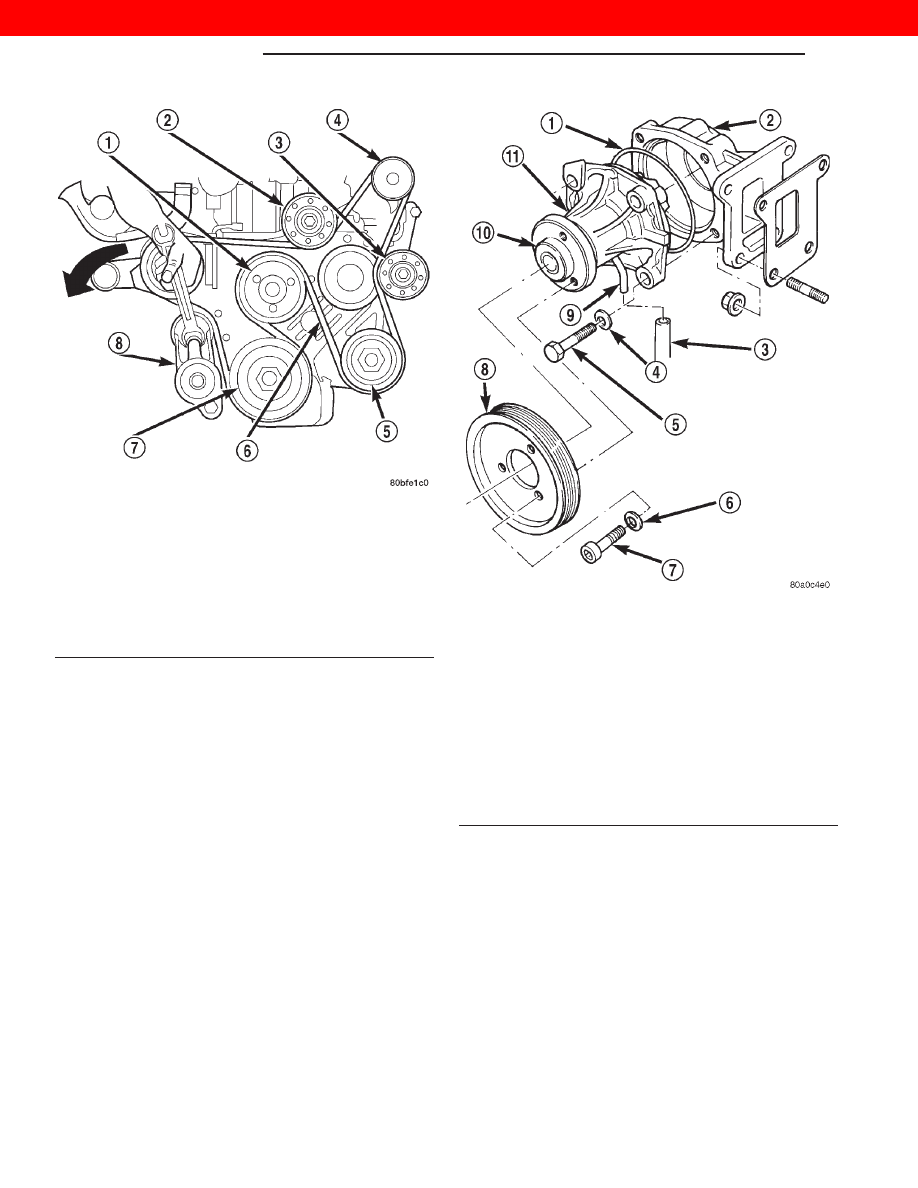Jeep XJ. Manual - part 79

(2) Drain the cooling system. Refer to Draining
Cooling System in this group.
(3) The thermal viscous fan drive and the fan
blade assembly are attached (threaded) to the fan
pulley shaft (Fig. 23). Remove the fan/fan drive
assembly from the fan pulley by turning the mount-
ing nut counterclockwise (as viewed from front).
Threads on the fan drive are RIGHT HAND. Snap-
On
t 36 MM Fan Wrenches (number SP346) can be
used to turn the mounting nut and to hold the fan
pulley from rotating.
(4) If the water pump is being replaced, do not
unbolt the fan blade assembly (Fig. 23) from the
thermal viscous fan drive.
(5) Remove the upper fan shroud-to-upper cross-
member mounting bolts. One of the bolts is mounted
vertically at the bottom of the fan shroud.
(6) Slip the fan shroud rearward. Remove the fan
shroud and viscous drive/fan blade together as one
assembly from the engine compartment.
(7) Loosen but do not remove the 3 water pump
pulley bolts (Fig. 22).
(8) Remove the drive belt by relieving the tension
on the belt tensioner. For procedures, refer to Belt
Removal/Installation in the Engine Accessory Drive
Belt section of this group.
WARNING: CONSTANT TENSION HOSE CLAMPS
ARE USED ON MOST COOLING SYSTEM HOSES.
WHEN REMOVING OR INSTALLING, USE ONLY
TOOLS DESIGNED FOR SERVICING THIS TYPE OF
CLAMP
(Fig.
24).
ALWAYS
WEAR
SAFETY
GLASSES WHEN SERVICING CONSTANT TENSION
CLAMPS.
CAUTION: A number or letter is stamped into the
tongue of constant tension clamps (Fig. 25). If
replacement is necessary, use only an original
equipment clamp with matching number or letter.
Fig. 21 Automatic Belt Tensioner Assembly
1 – FAN PULLEY
2 – IDLER PULLEY
3 – IDLER PULLEY
4 – GENERATOR
5 – POWER STEERING PUMP
6 – DRIVE BELT
7 – CRANKSHAFT PULLEY
8 – AUTOMATIC BELT TENSIONER
Fig. 22 WATER PUMP REMOVAL/INSTALL—
TYPICAL
1 – O-RING SEAL
2 – WATER PUMP ADAPTER
3 – DRAIN HOSE
4 – WASHER
5 – PUMP MOUNTING BOLTS (4)
6 – WASHER
7 – WATER PUMP PULLEY BOLTS (3)
8 – WATER PUMP PULLEY
9 – VENT TUBE
10 – PUMP HUB
11 – WATER PUMP
7 - 24
COOLING SYSTEM
XJ
REMOVAL AND INSTALLATION (Continued)
2000 JEEP CHEROKEE